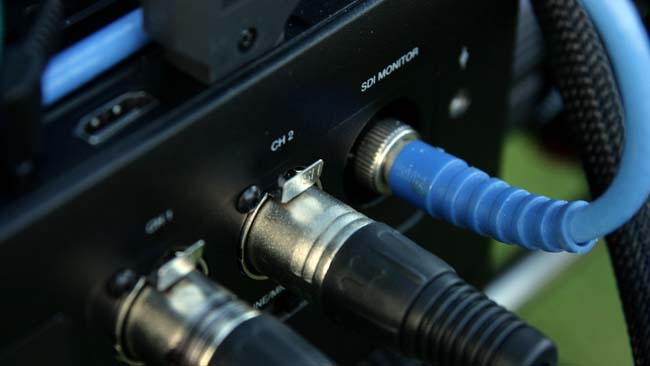
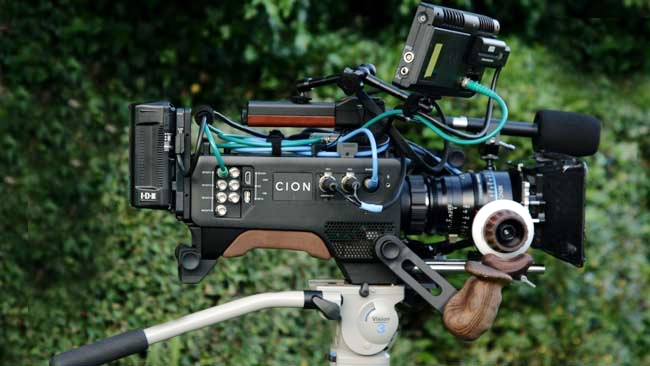 Phil Rhodes on the AJA Cion
Phil Rhodes on the AJA Cion
Our Technical Editor, Phil Rhodes, recently spent some hands-on time with the AJA Cion 4K camera. Here are his thoughts on the current state of the Cion and the possibility of further refinements.
Thanks to Scan Computers for their help and support in setting up this review
When AJA first announced its development of a camera, it was easy to be surprised that it would stick a toe into the bubbling lava pool of acquisition equipment, then excited because of the company's reputation for quality. AJA's pedigree as a developer of embedded electronics (which is what a modern camera is, in at least certain key characteristics) could hardly be more glowing.
Discussion of the Cion's background inevitably turns to AJA's range of recorders, the Ki Pro etc, which represent a pretty reasonable technology base upon which to build a camera, especially given that many camera manufacturers order sensors from outside semiconductor foundries (the exceptions being Sony, Canon and now to some extent JVC, who own fabrication facilities). The thing which distinguishes cameras from more prosaic electronics is, of course, the close attention to layout, support and ergonomics which a successful design requires. This is not a field in which AJA has previously operated, but it is one aspect at least in which Cion is a rousing success.
What Cion gets right
As the first pictures of the camera appeared on the projection screen at the Renaissance hotel in Las Vegas during the NAB before last, it was immediately obvious that several good choices had been made. Cion is laid out and built like a real camera – like a good product of the iron-and-chrome old school.
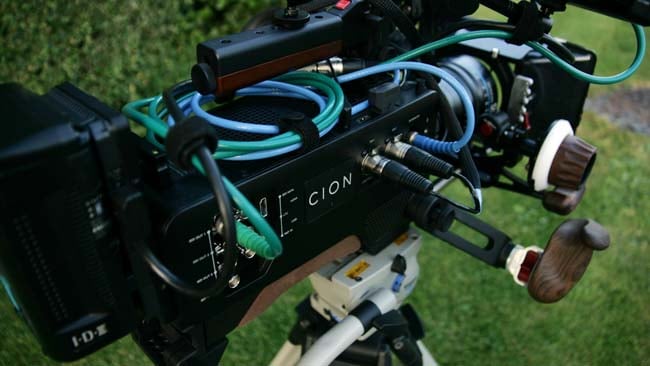
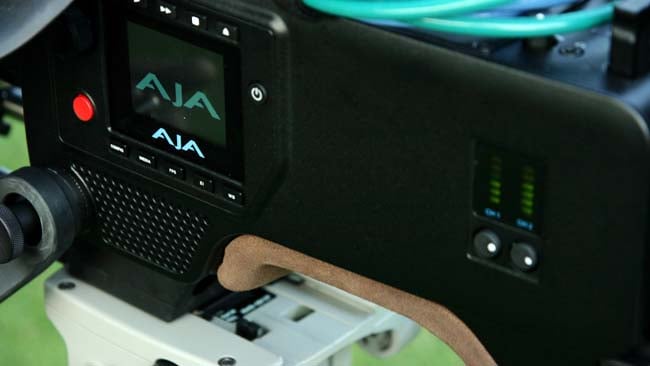
Reviews have almost universally lauded these aspects of the camera, the use of natural materials, the sturdiness and the solidity. As a result, Cion, while not enormous, doesn't enjoy the featherweight portability of its most closely-priced competitors, but it answers, fully and with great conviction, many of the questions that we have repeatedly asked about layout in lower-cost cameras.
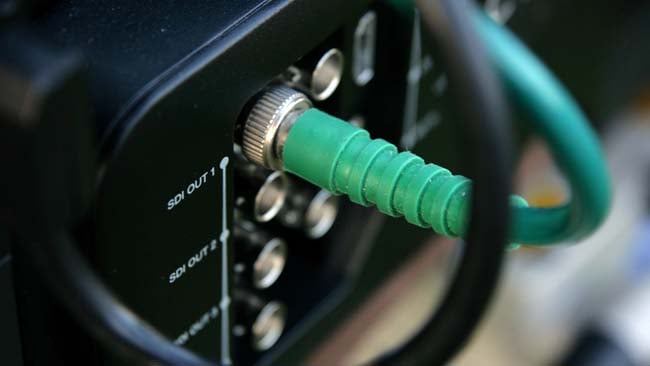 AJA Cion I/O Area
AJA Cion I/O Area
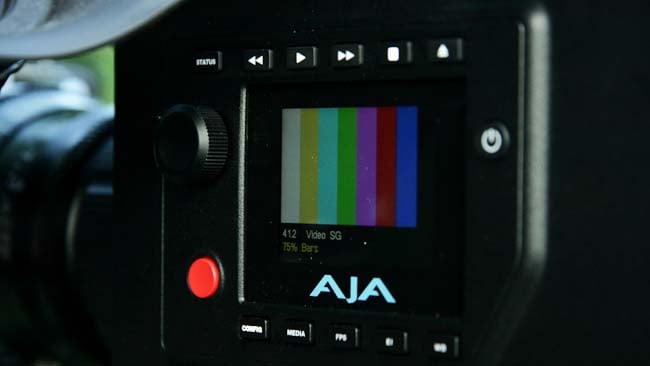 AJA Cion Display - Color Bars
AJA Cion Display - Color Bars
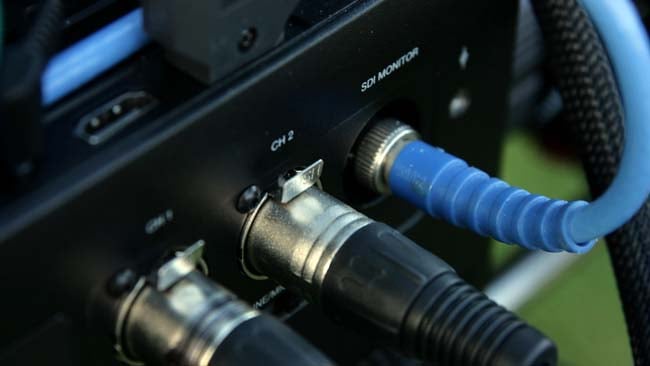 AJA Cion Audio XLR Inputs and EVF Output
AJA Cion Audio XLR Inputs and EVF Output
Whether AJA really needed to do so much custom engineering to create a range of accessories is another matter. There are understandably custom front and back base blocks to provide for 15mm rods, among other things, though they lack a Sony VCT-14U-compatible quick release. Many of the other accessories we received with the demo unit, however, are Vocas products of superb quality and the combination is a thing of beauty.
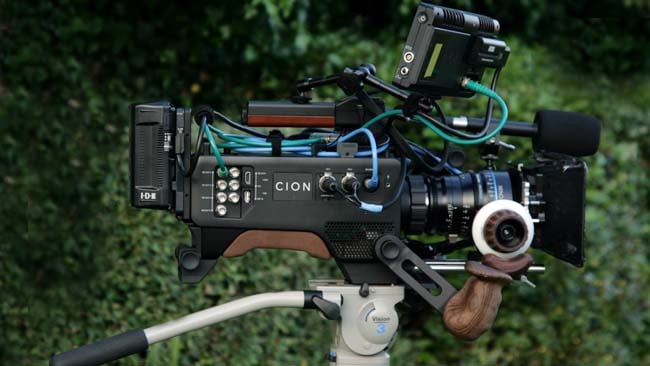
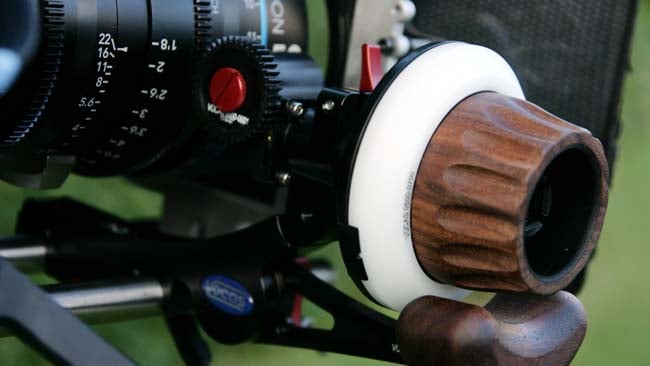 Vocas Follow Focus
Vocas Follow Focus
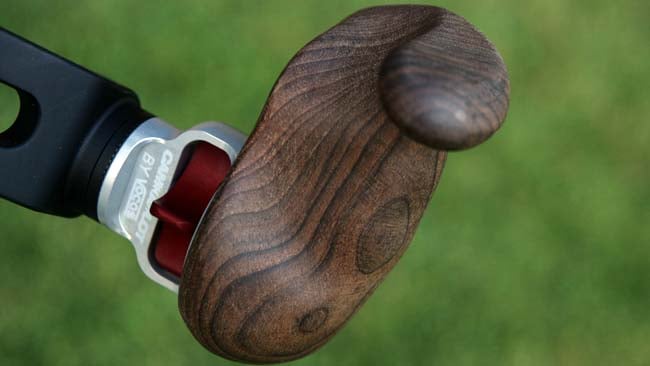 Vocas Hand Grip
Vocas Hand Grip
This particular thing of beauty is oriented firmly toward single-camera dramatic productions. The lack of an affordable ENG-style lens with Super 35 coverage, a need we've mentioned again and again, remains a bugbear that AJA is not in a position to solve (unless it chooses to dive into lens manufacturing as well). There is talk of B4 lens mounts, but these will inevitably need to involve image-expanding optics and are likely to be expensive, to say nothing of the cost of a B4-mount broadcast lens. The need remains unfulfilled.
The continuing documentary-lens conundrum aside, the cost of accessorisation should also be borne in mind when considering a purchase. Advertised prices are for the body only, without viewfinder, battery system or optics, which are the basic requirements.
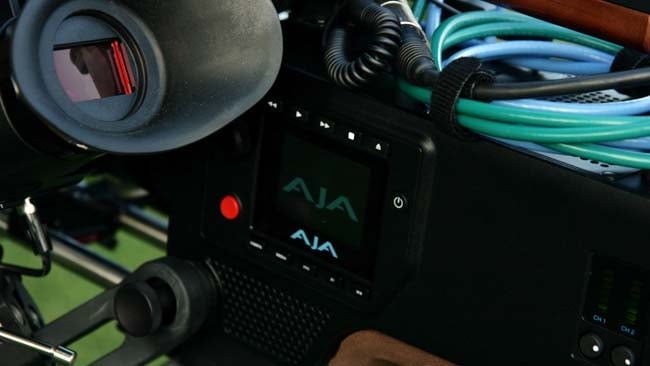 AJA Cion with Alphatron EVF
AJA Cion with Alphatron EVF
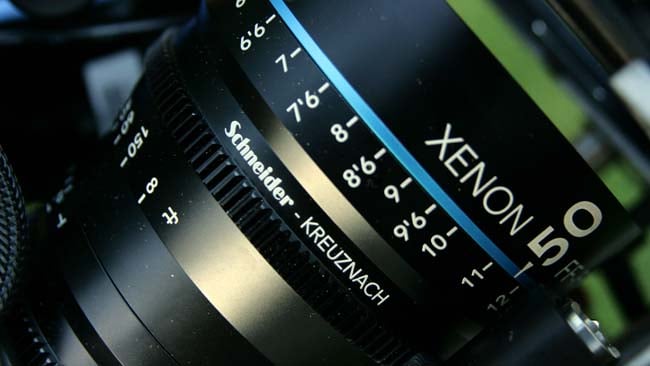 AJA Cion with Schneider Xenon FF-Prime 50mm Lens
AJA Cion with Schneider Xenon FF-Prime 50mm Lens
Glass to do 4K cameras justice is not cheap, though there is an EF mount option if you've already invested. Either way, from the point of view of someone moving up from DSLRs, the Cion is a spectacularly lovely camera from a usability point of view, easily the best in class at this point. If all this seems like overstatement, fine: in a world filled with vastly less usable, vastly more fiddly cameras in the same price range, it's very hard to overstate the need for the sort of design work that Cion exemplifies.
Those Highlights
This is hardly an unusual opinion, though. Neither is the less welcome fact that current incarnations of Cion suffer what we might politely refer to as a rather sensitive reaction to bright highlights. It's impossible to present a worthwhile analysis of the camera without recognising the prevailing opinion on this point. One firmware update has already been released to address colorimetry, but more is needed here.
As with many early 4K cameras (and we hope there will be enough in future to make this generation seem early), Cion is in many ways an absolutely superb HD camera, with oversampling sufficient to ensure microscopically low noise. This provokes the thought that, in HD mode at the very least, six decibels of that noise floor could easily be given up to provide a stop or so to clean up the highlights and achieve much better overall results. It's risky to give advice without the sort of familiarity with the camera that AJA's engineers have. Even so, one might reasonably suspect that the resulting increase in noise, based on brief experiments with shooting underexposed and grading up, is likely to be worthwhile. This is a compromise, of course, but we're discussing an affordable 4K camera; a tiny bit of visible fizz is not a deal-breaker.
This can be done in camera, but getting good results out of the Cion at the moment, outside the controlled environment of the studio, requires a degree of deliberate underexposure. As such, it's a nerve-wracking process if you don't have time to be appropriately careful.
Asymmetric clipping
Furthermore, the Cion, as with many digital cameras, can sometimes show subtle problems with asymmetric clipping on specific colour channels, or at least problems with the techniques used to mitigate those problems. This can make clipping, which will always happen at some point, take on a colour tint and be uglier than it needs to be. This is something that is made obvious on most cameras under variable-hue lighting. When metal halide lighting is warming up, for instance, it typically moves through shades of yellow, cyan and green, which can make the problem particularly obvious. It's a complex behaviour in Bayer cameras and these journalistic musings aren't intended to imply that there are straightforward fixes for involved problems, but what a '90s colourist would call "desat white" is the instinctive solution.
Realizing Cion's full potential
What's important to realise is that if the highlight situation improves, Cion could be said to produce a rich, colourful image with real punch, with that punch not being dependent on extreme contrast or a precipitous falloff to black. It looks, in the midtones, like a good '80s action movie. It is in some ways the sort of picture that people always used to shoot film for before modern film stocks got all flat and grey and boring. Cion pictures are very particular, but if people are being lauded for mounting ancient, fuzzy anamorphics on F65s just to give their pictures a certain look, there's nothing wrong with that.
The greatest need, however, is for continued support, of whatever kind. There is a worrying tendency for companies in very fast-moving fields, such as cameras, to manufacture things and then support them with infrequent and trivial firmware updates. AJA has a superb reputation in this regard and has already shown a willingness to get this right regarding Cion. That dedication might make all the difference between a camera that's a big deal for the usual year or so and one which lasts quite a bit more.
We will write about Cion again, based on further experience in various lighting conditions; with such a unique device, development of technique is key.
Tags: Production



Comments